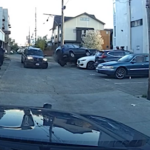
Officers dispatched 850,910 times, any type of force reported in 0.15 percent of events; the most serious uses of force occurred 20 times or 0.0023 percent of all dispatches
Today, the Seattle Police Department and Court monitor filed their final reports required by the two-year sustainment plan ordered by Judge Robart under the consent decree. The reports show significant progress for constitutional policing in Seattle. The City’s filing included an annual Use of Force report by the Seattle Police Department, showing that use of force is extraordinarily infrequent and with overall and consistent declines over 2018. The Monitor examined OPA to ensure the timeliness of OPA investigations as well as the quality and integrity of OPA’s investigations.
“The Seattle Police Department has transformed itself. The original investigation of SPD showed force was being used unconstitutionally far too often, and frequently involved people in crisis or under the influence. Nearly a decade later, as we submit the final report under the sustainment plan, Seattle police officers have become a national leader in policing and de-escalation with a commitment to true and lasting reform,” said Mayor Jenny A. Durkan. “Our growing city has put more demand on police and they have met the challenge. Our officers have responded to a record number of crisis calls, yet force has rarely been used. They have met every metric set forth by the Court’s sustainment plan. Over the past several years, our department has created new transparency and reporting to accurately track and investigate uses of force while putting in place new policies and trainings, especially for individuals in crisis. Our officers continue to show their dedication toward building community trust.”
In 2011, the United States Department of Justice (DOJ) released findings of a “pattern or practice” of unconstitutional use of force within the Seattle Police Department. Those findings indicated that 20 percent of incidents involving Type II and Type III force (1,230 incidents) were an unconstitutional use of force which led to the establishment of the Consent Decree. Today, force is rarely used.
Signed by Mayor Durkan as the then-United States Attorney for the Western District of Washington, the 2012 Consent Decree required the Seattle Police Department (SPD) to enact significant reforms, including: new use of force policies and trainings that emphasize de-escalation; a new approach to how officers interact with people experiencing mental crisis; new supervision and oversight with community involvement. As a result, the Seattle Police Department has led the nation on police reform efforts dramatically decreasing use of force overall – including a significant reduction of the most serious uses of force – and a significant decline in force used against people in crisis. The City continues to address the Court’s concerns on accountability.
“Today is a momentous day. The employees of the Seattle Police Department – sworn and civilian alike – have shown a steadfast commitment to the requirements and principles of reform,” said Chief of Police Carmen Best. “The filing of these final reports marks the completion of an important chapter in our story. Through the continued hard work of everyone here at SPD and in collaboration with our community partners, we will continue to set the standard for constitutional policing across the country.
Seattle City Attorney Pete Holmes said, “Tremendous progress has been made over this last decade, and none of us should take that for granted. Officers currently use force in only a fraction of one percent of all dispatches. These numbers demonstrate that SPD has achieved and sustained a remarkable reduction in the use of force since the Consent Decree. The data reflects how readily our police officers have embraced de-escalation tactics while continuing to engage in proactive policing.”
The report highlights include:
- Officers were dispatched 850,910 times while reporting using force in 1,264 times, representing 0.15 percent of all dispatches.
- The most serious use of force level (Type III) which is reasonably expected to cause serious injury or death occurred 20 times, which is less than 0.0023 percent of all dispatches.
- The vast majority of force incidents (77 percent) involved the lowest level (Type I) which cause transitory pain, the complaint of transitory pain.
- 76 percent of calls were priority 1 (531) and priority 2 (426) levels.
- Priority 1 dispatches require an immediate response and include incidents involving immediate danger to the life of a citizen.
- Priority 2 dispatches are incidents which quickly could develop into a more serious issue such as a threat of violence, injury, or damage.
- Fewer than 2 percent of all arrests resulted in Type II or Type III force.
- OPA has incorporated many of the recommendations that were made by the Monitoring Team in the 2016 OPA Review.
- For the full report, please visit:
https://spdblotter.seattlemulti.wpengine.com//dkt-605-1-spds-2019-annual-uof-report/
During the Phase II sustainment period that began in January 2018, the City is continuing to demonstrate its ongoing compliance through quarterly reports and three types of self-assessments: audits of its practices, reviews of SPD’s policies, and outcome reports that summarize policing data for the public. Quarterly reports must include recent data on use-of-force and crisis intervention practices, an update on the activities of SPD’s Force Review Board and Unit, and a discussion of relevant activities of the accountability organizations — the Office of Police Accountability (OPA), the Office of the Inspector General (OIG), and the Community Police Commission (CPC).

